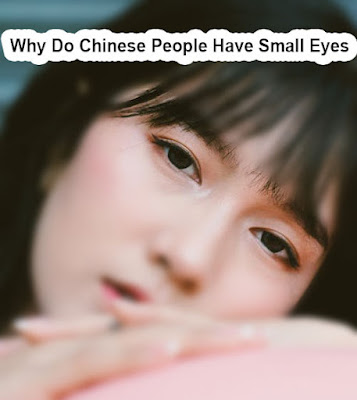
Chinese people, like all other ethnic groups, have a unique set of physical characteristics that distinguish them from other populations. One of the most notable of these is the relatively small size of their eyes. But why do Chinese people have small eyes?
Several factors contribute to the small size of Chinese eyes. One of the most significant is genetics. The Chinese population has a unique set of genetic characteristics resulting in smaller eyes than other ethnic groups. This is because the Chinese population has a high degree of genetic homogeneity, which means that the population's genetic makeup is relatively similar.
Another factor contributing to the small size of Chinese eyes is the environment. The Chinese population has historically lived in an area with a lot of sun and UV radiation, which can lead to smaller eyes as a way to protect the eyes from harsh sunlight. Additionally, the Chinese population has traditionally lived in areas with poor nutrition, which may also have played a role in the small size of their eyes.
There is also a cultural aspect to the small size of Chinese eyes. Historically, small eyes have been considered a desirable trait in Chinese culture. This is reflected in the art and literature of China, where small eyes are often depicted as a sign of beauty and elegance.
It is also worth noting that the small size of Chinese eyes is not necessarily a negative trait. In fact, small eyes can have several advantages. For example, they are less susceptible to sun damage and eye strain. Additionally, small eyes can be more expressive and convey a more excellent range of emotions.
The Color Of Your Eyes Is The Mirror Of Your Personality
In conclusion, the small size of Chinese eyes is a combination of genetic, environmental, and cultural factors. It is a unique characteristic of the Chinese population and should be viewed positively. It is not always a negative trait and also has some advantages. Understanding the reasons behind the small size of Chinese eyes can help us appreciate the diversity of human physical characteristics.
Another factor that may contribute to the small size of Chinese eyes is the structure of the eyelids. Chinese people tend to have a fold of skin, known as the epicanthic fold, that covers the inner corner of the eye. This fold is more pronounced in people of East Asian descent, including Chinese, Japanese, and Korean. The epicanthic fold can make the eyes appear smaller and more almond-shaped.
It's also important to note that while Chinese people may generally have smaller eyes than other ethnic groups, there is still a wide range of eye sizes within the Chinese population. Like any other physical characteristic, eye size is determined by a complex interplay of genetic and environmental factors and can vary significantly among individuals.
The small size of Chinese eyes has also been linked to specific health conditions. For example, people with small eyes are more susceptible to certain eye infections, such as conjunctivitis. They are also at a higher risk for developing certain types of glaucoma, which causes damage to the eye's optic nerve and can lead to blindness.
However, it is essential to remember that these health risks are relatively rare and that most Chinese people with small eyes will not experience any adverse health effects. It is also worth noting that many people with small eyes also have excellent vision and eye health.
In recent years, there has been a growing interest in plastic surgery to alter the size of the eyes. Some people may undergo eyelid surgery, also known as blepharoplasty, to create a more Westernized appearance. However, it's important to remember that this type of surgery carries its own risks and should be cautiously approached.
Can You Tell Someone's Personality By Their Eyes Size
In conclusion, the small size of Chinese eyes is a complex trait influenced by various genetic, environmental, and cultural factors. While it may be associated with certain health risks, most Chinese people with small eyes will not experience any adverse effects. It is just one aspect of the diversity of human physical characteristics that should be celebrated and appreciated.
